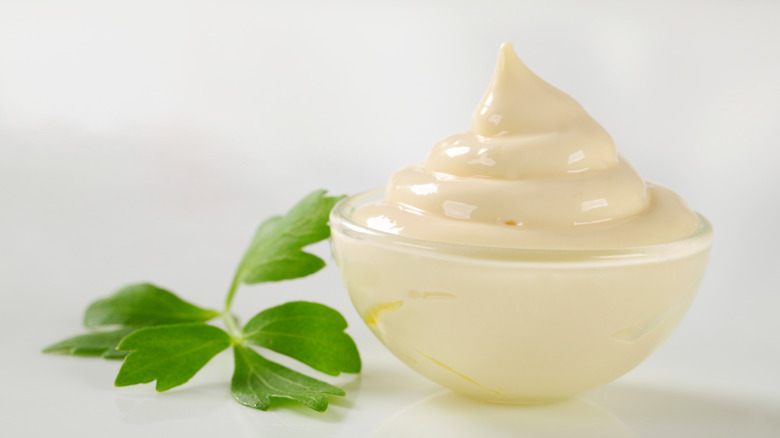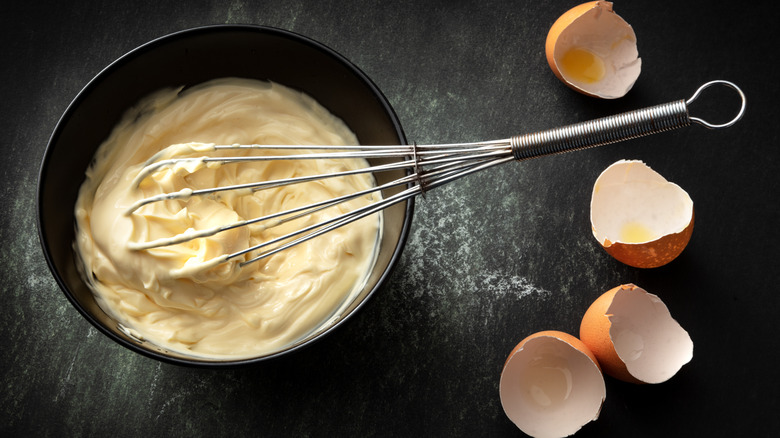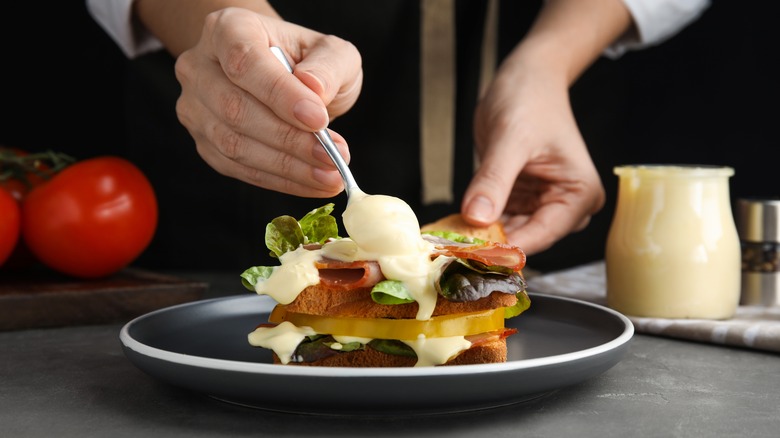Adding Oil Too Quickly Can Completely Ruin Homemade Mayo
Homemade mayonnaise is not just a luxury, it is a classic condiment. Although it is widely commercially available, there is nothing like a batch of creamy, fresh, homemade mayonnaise. The ingredients are readily available and the technique seems to be simple enough, but it can be deceptively tricky.
One of the most important parts of making successful homemade mayonnaise involves pouring the oil in slowly. Mayonnaise is, after all, made with just a few ingredients. Therefore, they must all be added in the appropriate way to make sure the condiment comes together properly.
Mayonnaise magic happens when the oil is slowly absorbed by the fatty and protein-rich yolk of the egg, drop by drop. In order for the yolk to absorb the oil properly, the oil has to be streamed in slowly. If it all gets dumped in, that is a surefire way to end up with a bowl full of broken mayonnaise.
Making mayonnaise work
Broken mayonnaise looks exactly as it sounds. It is the remnants of what could have been delicious mayonnaise but is instead a lumpy mess of part watery, part clumpy eggs and oil that just have not combined properly. The act of keeping the mayonnaise together is referred to as emulsification, which is when two substances that should not normally combine stay together in a homogenous way.
A bit of mustard added to the mayonnaise can help the mixture stay together, since it is a natural emulsifying agent that helps other foods, like mayonnaise and vinaigrettes, stay together instead of separating. Additional ingredients to classic mayonnaise often include salt and an acid of some sort, like lemon juice or white vinegar.
Once ingredients like grated fresh garlic, hot sauce, or fresh herbs are added to the dish, the mayonnaise enters aioli territory. But before that bridge is reached, it is vital to make sure other pitfalls are avoided.
Mayonnaise mania
In order to make excellent mayonnaise, it is important to remember that cooking can be a science as much or more than an art. That being said, making mayonnaise is both delicious (art) and precise (science). Adding oil too quickly is one danger, but so is using the wrong type of oil.
For example, if you're using a food processor or immersion blender to make mayonnaise, olive oil can turn especially bitter. This is a result of the oil getting literally broken into tiny droplets that make the olive's naturally bitter taste become more pronounced.
Using a whisk instead of a mechanical device of some sort can be fun and a great upper arm workout, but if you are not able to whip the egg yolks quickly enough while drizzling in the oil slowly enough, the mayonnaise will stay loose and will not ever come together. However, with the correct steps taken, mayonnaise comes together quickly and is a delicious condiment for any table.


